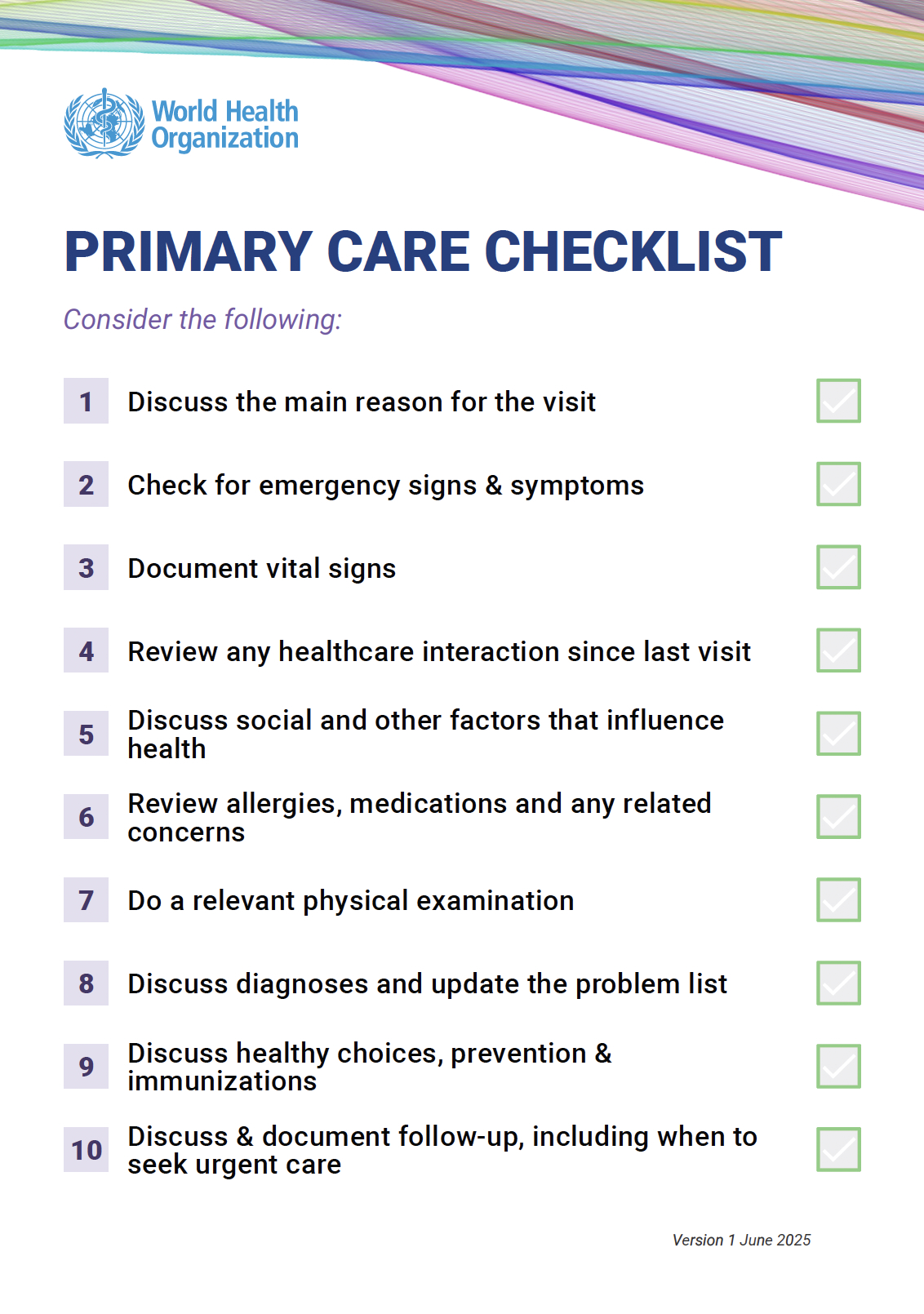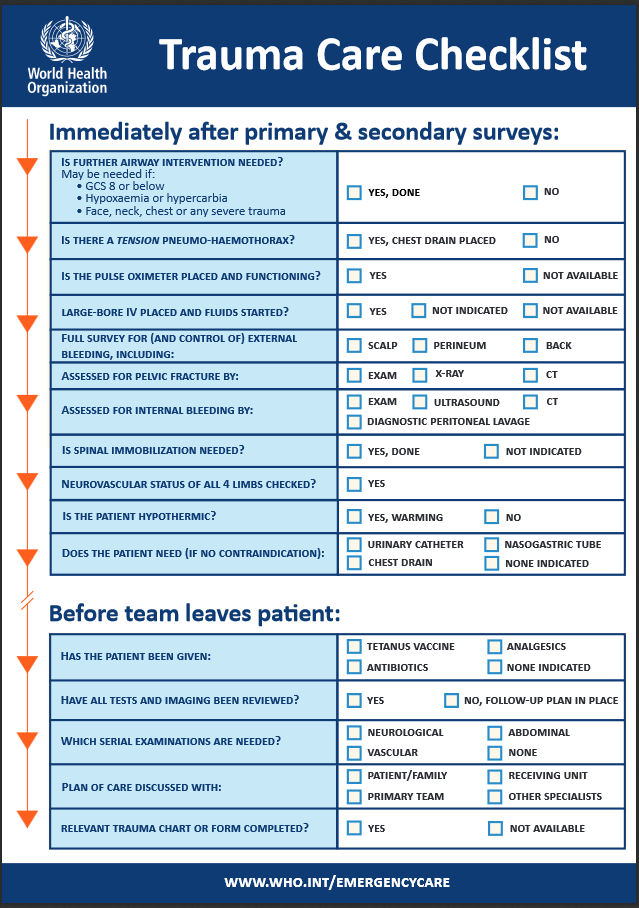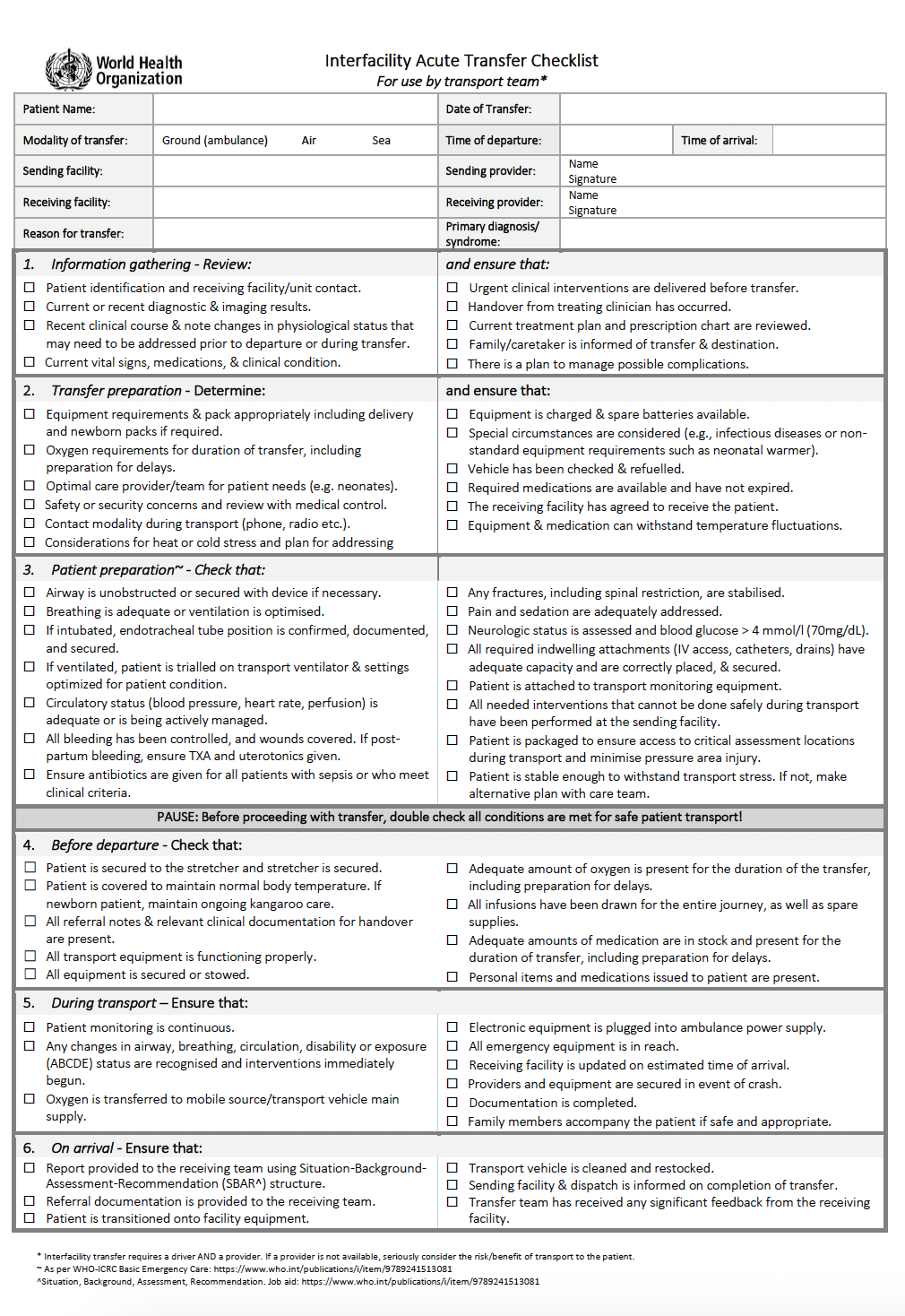
Clinical Checklists
Overview
Achieving universal health coverage depends not only on expanding access but also on ensuring that care is safe, effective, and high quality. Without this, increased coverage may fail to translate into improved health outcomes—undermining trust in the health system and discouraging people from seeking care, even when urgently needed. Key elements of universal health coverage include comprehensive preventive and continuous care close to home, reliable access to timely acute care for time-sensitive conditions, and early and appropriate referral pathways for more complex needs. An integrated approach to safe, quality patient care is essential to achieving optimal outcomes.
Clinical checklists are simple but powerful tools that help guide clinical decision-making, support consistent care, and reduce medical errors. Evidence shows that incorporating checklists into routine care can significantly improve patient safety and care quality—while remaining low-cost and scalable. WHO pioneered the use of safety checklists in health care through the Surgical Safety Checklist (WHO-SSC), launched as part of the Second Global Patient Safety Challenge: Safe Surgery Saves Lives. Its success has since inspired the adaptation of checklist-based approaches across a wide range of clinical settings and care pathways.
Tools
Primary Care Checklist
The WHO Primary Care Checklist summarizes ten key components of the patient encounter and encompasses the “5C's of primary care”: first contact accessibility, continuity, coordination, comprehensiveness and person-centeredness. It is intended to guide health workers in taking a structured systematic approach to a longitudinal primary care visit and allow flexibility to address individual needs. It serves as a practical tool to enhance communication, improve safety, and promote a person-centred visit.
Emergency Care Checklists
The Emergency Care Checklists are simple, one-page tools used to guide care for acutely ill or injured patients in emergency units. They provide a structured approach to ensure key life-saving steps are taken at critical points, including after primary and secondary surveys and before leaving the patient. Intended for high-acuity cases, these checklists have been shown to improve care processes and reduce mortality in all settings.
Surgical Safety Checklist
The Surgical Safety Checklist was developed for use in the operating theatre, to decrease errors and adverse events and increase teamwork and communication in surgery. The 19-item checklist has gone on to show significant improvement in clinical outcomes. Through improving communication and teamwork, it has demonstrated a significant reduction in morbidity and mortality around perioperative care.
Acute Referral and Transfer Checklists
The acute referral checklist and interfacility acute transfer checklist are practical tools that guide care teams through the essential steps for safely referring and transferring critically ill or injured patients. It ensures clear communication, clinical resuscitation, and the completion of key logistical and documentation tasks to support safe, timely, and coordinated patient transfers. The acute referral checklist is for sending facility teams and the interfacility acute transfer checklist is for transport teams.
Contact us







